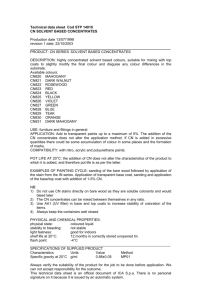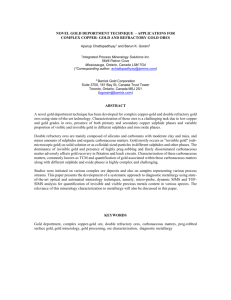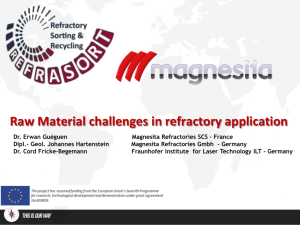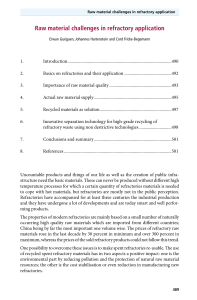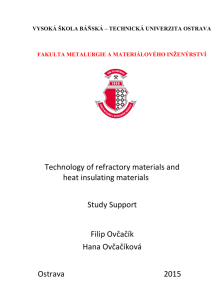POX-CIL process optimization for refractory gold
advertisement
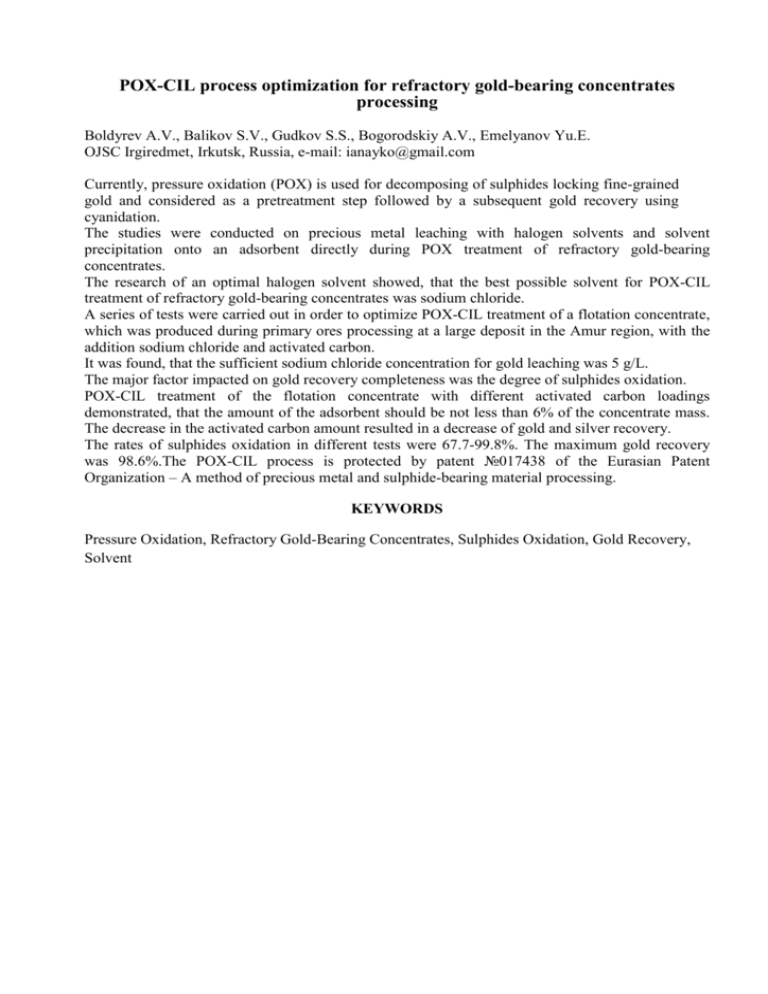
POX-CIL process optimization for refractory gold-bearing concentrates processing Boldyrev A.V., Balikov S.V., Gudkov S.S., Bogorodskiy A.V., Emelyanov Yu.E. OJSC Irgiredmet, Irkutsk, Russia, e-mail: ianayko@gmail.com Currently, pressure oxidation (POX) is used for decomposing of sulphides locking fine-grained gold and considered as a pretreatment step followed by a subsequent gold recovery using cyanidation. The studies were conducted on precious metal leaching with halogen solvents and solvent precipitation onto an adsorbent directly during POX treatment of refractory gold-bearing concentrates. The research of an optimal halogen solvent showed, that the best possible solvent for POX-CIL treatment of refractory gold-bearing concentrates was sodium chloride. A series of tests were carried out in order to optimize POX-CIL treatment of a flotation concentrate, which was produced during primary ores processing at a large deposit in the Amur region, with the addition sodium chloride and activated carbon. It was found, that the sufficient sodium chloride concentration for gold leaching was 5 g/L. The major factor impacted on gold recovery completeness was the degree of sulphides oxidation. POX-CIL treatment of the flotation concentrate with different activated carbon loadings demonstrated, that the amount of the adsorbent should be not less than 6% of the concentrate mass. The decrease in the activated carbon amount resulted in a decrease of gold and silver recovery. The rates of sulphides oxidation in different tests were 67.7-99.8%. The maximum gold recovery was 98.6%.The POX-CIL process is protected by patent №017438 of the Eurasian Patent Organization – A method of precious metal and sulphide-bearing material processing. KEYWORDS Pressure Oxidation, Refractory Gold-Bearing Concentrates, Sulphides Oxidation, Gold Recovery, Solvent
